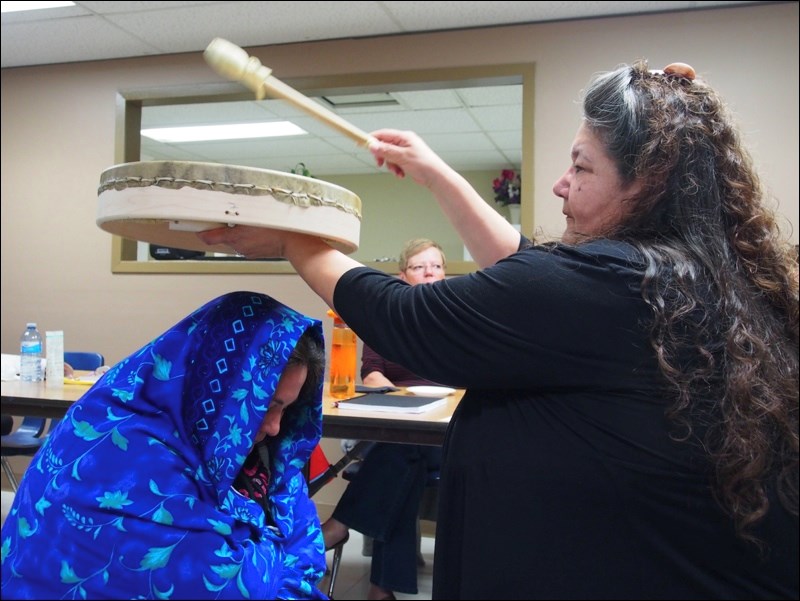How can domestic violence be prevented, and how can a community heal damage that has already been done?
Last week, 24 women gathered at the Flin Flon Friendship Centre to learn how to answer that question.
The Red Road to Healing is a family violence prevention program that is grounded in Indigenous healing practices and focused on addressing domestic violence in Aboriginal communities.
Shannon Buck, a survivor of domestic violence, created the program in 2010. She led last week’s workshop, which was organized by the Women’s Resource Centre, to train local people to become facilitators of the program.
The course was funded by the Family Violence Prevention Program and offered to participants free of charge.
Buck says that rates of family violence among Indigenous people are three and a half to five times higher than any other group in Canada, a chronic issue that she aims to address with her course.
“The underlying strategy is about repairing broken relationships,” Buck says. “In our teachings, everything begins with your relationship with Creator, and once you have a good understanding of that, your relationship with yourself becomes healthier and stronger and you’ll protect yourself from accepting abuse into your life. It radiates out to the other people around you, so that you treat each other with respect and recognize that sacredness that all life has.”
Participants at the training last week included employees of various community services such as the Flin Flon Friendship Centre and the Women’s Resource Centre, as well as probation officers, educational assistants, primary health care workers and an addictions worker.
The participants took part in experiential learning activities, developing a deeper understanding of the historical and cultural factors that contribute to domestic violence, particularly in Indigenous families.
“It’s really important that practitioners can understand where their clients are coming from, and the unique needs that Indigenous people have,” Buck explains.
Ojibway Filmmaker Aaron Peters documented the training session for an upcoming documentary, and created a short film for participants as well. In the film, many of the women commented on how emotional, and personal, the training experience was.
Buck explains that as the participants learn about violence, abuse and coping with stress and emotions, personal memories are often unearthed and shared with the group.
“It was very empowering…there was a lot of healing going on,” says Marian Paul, coordinator of the Nor-Man Regional Parent-Child Coalition and a workshop participant.
“It reinforced the idea that women are powerful,” added Courtney Grieg, a counsellor at the Women’s Resource Centre, who says the participants developed a close connection through the training experience.
The training concluded with a sweat lodge, a traditional healing ceremony led by Margaret Head-Steppan, elder and cultural advisor at the Friendship Centre.
“This is really powerful training that brings up a lot of stuff for people,” Buck explained. “The sweat lodge is a way to let that stuff go.”
Now that the training is complete, the 24 women, who work with clients in Flin Flon, Creighton, Denare Beach, Cranberry Portage, Sherridon Pelican Narrows and The Pas are ready to share their knowledge.
Paul says she plans to offer The Red Road to Healing course next month.
Colleen Arnold, executive director of the Women’s Resource Centre, says her organization will start applying knowledge from the training in its domestic violence group, which is offered annually as an eight-week educational program. While the program has many positives, one area for improvement might be better engagement with men.
Only women chose to enroll in last week’s training, though men are welcome to participate in Red Road to Healing workshops.
Peters, the filmmaker, says he was the only man in the room for most of the class.
“I think men need this training,” he says, adding that men might not feel welcome to participate in domestic violence training because they are often seen as perpetrators of violence – but that’s all the more reason to include them.
“I think they would find it transformative,” he says.




